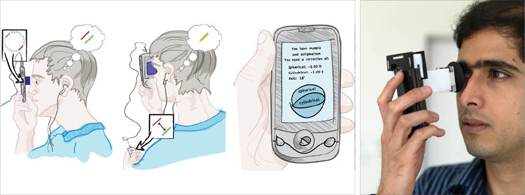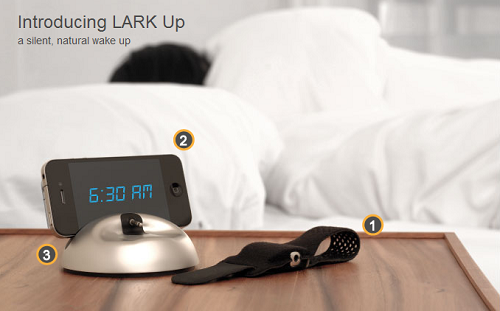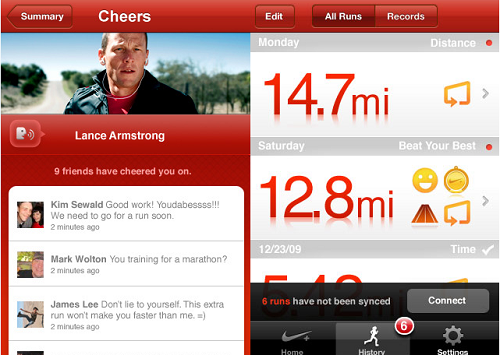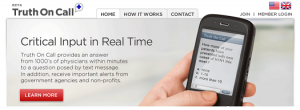Five Mobile Trends Redefining Health
Everywhere Access of Information
Mobile phones are helping people make more informed health-related decisions. Hundreds of mobile websites and apps are providing reference for topics like anatomy, first-aid, and drug-related conditions. Everywhere access to these tools are saving lives. Filmmaker Dan Woolley survived the Haiti earthquake by referencing a first-aid app to treat his wounds. Chicago art instructor Tanya Gill was saved during a stroke using NPR for iPhone. WebMD puts it well, "Better information. Better health."
Mobile is also enabling patients to connect directly with doctors and experts. PricewaterhouseCoopers found that fifty-six percent of US consumers liked the idea of remote healthcare, 41 percent prefer care delivered via mobile device. Today, this is being played out through SMS. For example, some doctors like Brooklyn's Jay Parkinson are making themselves reachable via mobile IM or email. San Francisco-based Truth On Call lets people text questions to a group of physicians. Text in the City helps teens develop a relationship with their clinic through texting.
Affordable Tools for Physicians
Consumer devices are being used as affordable alternatives to industry standards. As of late, Apple's iPad is especially popular. Its weight, Wi-Fi support, and resistance to dust and liquids help it compete with the Panasonic Toughbook H1 and Cisco Cius. Smartphones are also prevalent in the workplace. According to Spyglass Consulting Group, 94 percent of physicians are using everyday smartphones and consulting apps like Epocrates or Johnson and Johnson's BlackBag while on-the-job.
In addition to the standard hardware, add-ons and peripherals extend device capabilities to create a "hand-held hospital". Affordable modifications like Crabfu’s $5 microscope and MIT's $1 plastic lens attachment can turn a phone into a scientific Swiss Army knife. Other tools include iStethoscope, UCLA's mobile microscope, and the AirMicro A1 for iPad. All of these are enabling what's known as "telemedicine" and leading to the decentralization of healthcare. As William J. Mitchell states in City of Bits, telemedicine "make old-style assemblies of patients around specialized medical facilities less necessary."
Quantified Self
Just as people have long used journals, diaries and logs to track their symptoms and behaviors, mobile phones are being used to monitor aspects of health and well-being. This can help with compliance, creating a sense of control and motivating healthy behavior. It is also a much more efficient way to collect information that can be passed along to doctors. PricewaterhouseCoopers found that 88 percent of physicians would like their patients monitoring their health at home.
The phone is not just an on-hand computer we can use to type in data points, it can collect information automatically through its sensors (GPS, microphone, accelerometer, clock) or wearable sensors can send their data to the directly phone. This creates a body area network, or as Frog Design describes it, "Google for our bodies". Some of these wearable sensors include Fitbit, S2H Replay, and BodyMedia, but The Quantified Self lists many more. Once reaching the mobile phone, captured physiological metrics can be sent off into the cloud and then to the physician. It can also be analyzed and sent back to a patient. With increasing computational intelligence and real-time information flow, apps will soon influence decision making on the fly. Both Sleep Cycle and Lark already do this for better sleep, optimizing ourselves and our environment.
Social as Motivational Force
Sticking to a healthcare regime is not easy, which is why there are support groups for nearly every illness. These networks of like-minded people provide a mutual source of motivation. Since at least 1982, support groups have sprung up online in the form of niche social networks, forums and blogs. Sites like 43things let us publicly establish our goals while networks PatientsLikeMe, Disaboom, and Inspire connect us around particular needs.
Mobile phones can keep these groups connected anytime, anywhere. Combine this with their ability to collect data as described above and we see the emergence of a real-time information-rich social experience. Groups can build each other up—or spur on friendly competition—by viewing peers' real-time progress or lapses. We see the beginnings of this in Nike's recent integration with Facebook, where friends can cheer each other on during a run.
Societal Level Health Management and Geo-Medicine
Aggregate personal data will lead to better management of societal level health issues. Insights and solutions will be drawn from open data to make high-level decisions. We're already seeing mobile phones used as early warning systems in disease outbreak detection. Several universities are using SMS to bring disease reporting to rural areas in South Asia. Google Flu Trends uses aggregated Google search data to estimate flu activity around the world.
A smartphone's location awareness makes it even easier to track health trends. Medical data tied to a place, what we can call "geo-medicine," enables us to see even more patterns and correlations. In a TED talk, Bill Davenhall discusses how cross-referencing where he went with a map of toxic release inventories by the EPA, he was able to visualize and draw conclusions on how his location affected his health. The Ushahidi platform is being used to do this on a larger scale, enabling the collect visualize and map health-related information in emerging nations.

















